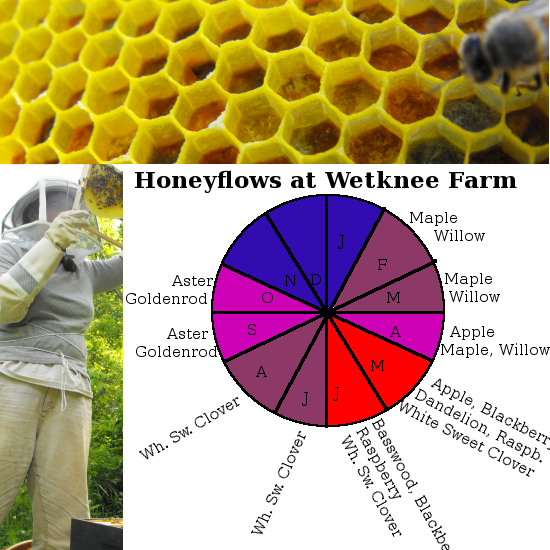
Peak nectar and pollen flows

Every beekeeper I talk to seems to think that a different plant is the
be all and end all when it comes to pollen and nectar production.
I finally tracked down some hard data --- Some Ohio
Nectar and Pollen Producing Plants from the Ohio Extension Service
--- which laid all the guesswork to rest.
Based on their table of major nectar and pollen producers, I've
discovered that May and June will be the major honey production months
on our farm. It sounds like we're going to get a summer lull if
we don't come up with some more extensive White Sweet Clover patches.
Or discover some other summer-producers....
Want more in-depth information? Browse through our books.
Or explore more posts by date or by subject.
About us: Anna Hess and Mark Hamilton spent over a decade living self-sufficiently in the mountains of Virginia before moving north to start over from scratch in the foothills of Ohio. They've experimented with permaculture, no-till gardening, trailersteading, home-based microbusinesses and much more, writing about their adventures in both blogs and books.
Want to be notified when new comments are posted on this page? Click on the RSS button after you add a comment to subscribe to the comment feed, or simply check the box beside "email replies to me" while writing your comment.
RSS
summer producers
White sweet clover does well for bees, but did you know that it is a persistent pest of the tall grass prairie? Why not try planting an area to native wildflowers for consistent late June, July and August nectar sources for honeybees, not to mention refuge for all sorts of native pollinators. Contact your local NRCS office, there might be some federal dollars to assist you in enrolling agricultural ground into Conservation setaside programs, plus getting the ground prepared and planted. Planting right after soybeans yields good results.
Comment by
Charlotte
— Mon Jun 22 16:53:18 2009
- Remove comment
comment 2
Thank you so much for that excellent information! We're far from the prairie and white clover doesn't seem to be invasive here, but that's definitely something I'll add in next time I recommend clover to folks further away. (We've got masses of wildflowers on the 56 acres of our property which goes wild, or we'd definitely take your other advice too!)
Comment by
anna
— Tue Jun 23 20:39:48 2009
- Remove comment
Add a comment
